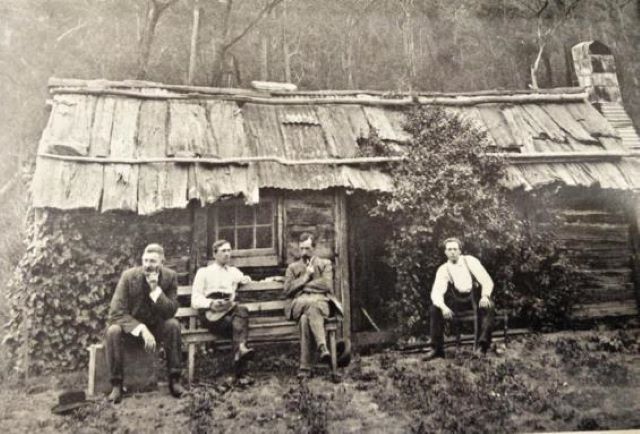
By Mikayla van Loon
A group of pioneering young men less known in nature writing than some historians deem appropriate began their humble journey in the quiet reserves of Mount Evelyn.
E Brooke Nicholls, Charles Barrett and Claude Kinane, founders of the Walden Hut located on the Olinda Creek, became some of the most notable naturalists and writers of the early 1900s.
With the story of these three men brought to the attention of the Mount Evelyn History Group and in particular Janice Newton, the group began researching the influence they had on Victorian and Australian nature writing.
Ms Newton said over a period of a few years, including the pandemic lockdown years, she was able to compile notes and research to produce a 110 page book, which will launch on Saturday 16 September telling the story of the three pioneers.
“During the Covid shutdown I got hold of a copy of the book that inspired these three young men, which was a book by Henry David Thoreau called ‘Walden’ written in the 1850s,” she said.
“So these three young men got together in their mid to late 20s in 1903 and they rented a hut, a basic bark and slab house that had been constructed probably in the 1890s by the village settlers along the Olinda Creek at the bottom of Mount Evelyn on the edge of Mooroolbark and Lilydale.
“They decided they were going to do for Victoria, Australia what some of the famous nature writers had done in England in Hampshire, and what their mentor Thoreau had done in the US for a place called Concord, Massachusetts.”
From 1903 to 1907 the men observed and recorded what they saw, writing a series of articles which would feature in The New Idea: An Australasian Journal for Women.
“They’re very beautiful descriptions of the Olinda Creek and the birds and what it looks like in the dawn and then the dusk,” Ms Newton said.
“We give examples of their writings, it’s a very poetic but also scientific appreciation of nature. So they write romantically or sensually about nature and how it feels and looks and the colours and the scents.”
The book, ‘The Woodlanders of Walden Hut’, also traces the lives of Barrett, Kinane and Nicholls during this period and outlines who inspired them most.
“We list about five people who visited the hut in that period who were quite renowned for certain reasons, for bird photography, [poetry] and so forth,” Ms Newton said.
These days, while the hut itself might have long deteriorated, Ms Newton said the reserve, located virtually opposite Chateau Wyuna on Swansea Road, remains untouched.
“That area actually hasn’t changed all that much because it’s not been cleared and so it’s not suburbanised because it was flood prone and all the little farmers were gradually removed.”
Once they left the hut, the three men went in different directions but each kept their connections to nature and writing in some form.
Barrett, a trained journalist, went on to write over 100 books and frequently contributed to boys magazines, Scout journals, the Victorian Naturalist and The Emu, a bird watching magazine, as well as gaining an interest in Central Australia.
Nicholls was scientifically trained as a dentist which helped fund his ability to go on expeditions around the county.
He later wrote two children’s books, one about Jacko the kookaburra and the second about Billy the penguin.
“Kinane was a photographer and he went to amazing lengths to get good photographs for that day when the cameras were very basic, standing in water up to his chest for hours and climbing very high, shooting up trees.”
Crediting the original research and knowledge of Barrett, Nicholls and Kinane to Professor Tom Griffiths, Ms Newton said it was he who noted it as “of national significance if you look at the history of nature writing in Australia”.
“In Australia, we haven’t recognised nature writing as much as it has been in the States,” she said.
“It’s a new area, and people are starting to write books about these people but these three aren’t well known, it’s only really Tom Griffiths who brought it to our attention.”
Ms Newton is hopeful one day a replica of Walden Hut can be put at the original site to celebrate the men and create a pilgrimage for generations to come.
But for now, a book will have to suffice.
Hear from Dr Gary Presland who will launch the book, the great granddaughter of Charles Barrett and members of the History Group before walking to the original site itself on Saturday 16 September from 1pm.
The launch will be held at Hardy House, 49 Birmingham Road, Mount Evelyn. RSVP to pherlihy3@gmail.com or mtevelynhistorygroup@gmail.com







